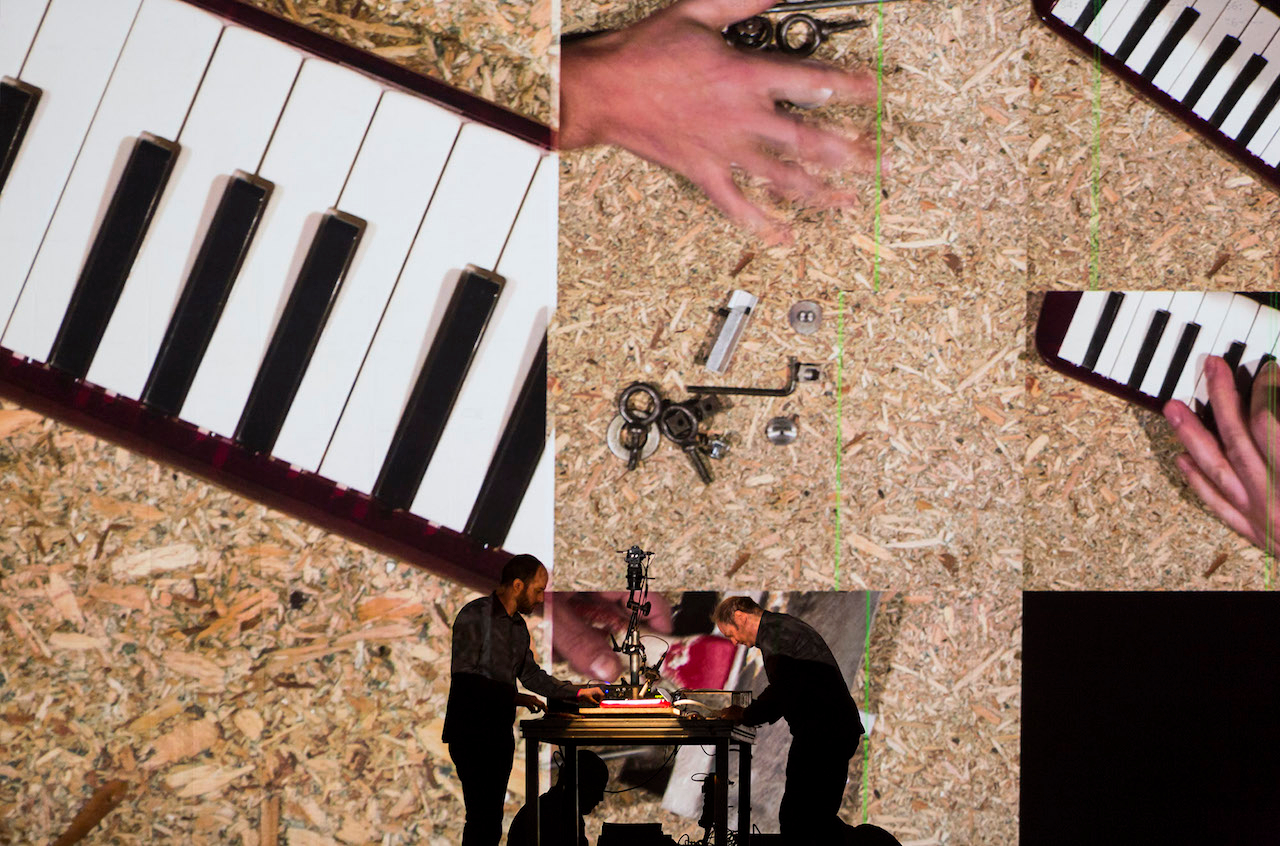- In a city as well served with clubs and festivals as Barcelona, a big electronic music event needs to carve out a niche if it's to succeed. MUTEK.ES, which launched in 2009, has done just that over the course of the last nine years, showing its dedication to digital creativity in sound, music and audiovisual art. In 2018, the lineup spread from Move D to Polish clarinetist Waclaw Zimpel. And while not everything worked—there were dull laptop sets and one-off collaborations that never got going—the festival, at its best, was charmingly future-facing, unafraid to put its faith in the oddest corners of electronic music.
Here are five key performances from across the five days.
Colleen
It's hardly a secret that a lot of live electronic music relies on pre-recorded loops and rigid computer sequencing. MUTEK.ES, though, booked several acts that were the exception to this rule. The French musician Colleen was a standard bearer for a more freeform approach. Her gig on the opening night saw her tweak and filter the billowing electronic loops that ran through her recent album, A Flame My Love, A Frequency, using just two keyboards.
In this era of tightly programmed perfection, being so close to the creative process was thrilling and often nerve-wracking. You could feel Colleen's awkwardness, which was amplified by the utilitarian basement venue within Institut Français. She performed to a seated audience who could see the whites of her eyes. But this sense of intimacy only heightened the music's emotional pull. The songs' pillowy melodies drew the audience in, while Colleen's fabulous—if slightly tense—vocals fired hooks straight into our hearts.
Caterina Barbieri
The Italian composer wrote her thesis on the perception of time, space and sound, a fitting subject for someone who seemed to bend time to her will at MUTEK.ES. During the opening 25 minutes of her set, she constructed a pointillist trance riff that pattered like neon rain before slowing it down almost imperceptibly, until the melody dragged like a dinosaur trapped in tar. Perhaps it was just the setting—she performed in near darkness, the room lit by pins of light—but the effect was beautifully disorientating, as if time itself had slowed down. Having made her point, she gently took the riff back up to full speed, adding subtle melodic flourishes and playing with the sonic texture, sending the crowd into raptures. She was no one-trick pony—later, she played a track that mixed the rumble of thunder with the noise of a cinematic fist fight—but her first song was so perfectly dramatic that everything else felt almost unnecessary.
Ziúr
The Berlin-based producer's live set was full of musical extremes and sonic contrasts, a giddy rush of samples, effects and drums that seemed to mutate as soon as you latched on. One song blended the vocal from TLC's "No Scrubs" with a deafening industrial beat; another resembled Ice Cube's "It Was A Good Day," had it been recorded in a dungeon. At other points, you could hear the influence of gabber, new age, thrash, metal, pop and jerky funk in a mixture that pulsed with energy. The crowd, who had been sedated all afternoon, dutifully lost it, with outbreaks of pogo-ing and hands raised in devil horns.
Graham Dunning
Dunning's "Mechanical Techno" show was maybe the most charming live set at MUTEK.ES. He played several records at once on a specially elongated turntable axle, with each record making noise in a different way, be it via locked groove, the record physically knocking a shaker or table tennis balls dropping onto the surface of the vinyl. Academic as that may sound, the spectacle produced 45 minutes of wonky techno that lit up Mazda Space on Friday evening. It was fascinating watching Dunning work, his head bobbing with the frantic enthusiasm of a true believer. The sounds were joyful, a kind of spit-and-sawdust techno that threatened to barrel into chaos at any point.
Alexandre Burton & Julien Roy
If it weren't for events like MUTEK.ES, Alexandre Burton and Julien Roy might have difficulty finding a platform for their collaborative show, "Three Pieces With Titles," a head-spinning exploration of the interface between image and sound. Burton is an electroacoustic artist, coder and programmer; Roy is a sound artist. The show is based around what Burton calls an "audiovisual sampler," a bespoke piece of kit that allows the duo to sample whatever images are picked up by a central camera. In the first of the three pieces, the image controlled the sound. In the second, the sound controlled the image. And in the third, "the sound is the image is the sound"—colour turned into sound, acoustic vibrations changed the colour, and vice-versa.
The effect was both familiar and unsettling, like a vast game of Ableton dominoes, with the crowd left to guess what exactly the two men onstage were doing, their hands occasionally drifting into view. From this intricate setup, Burton and Roy created music that built to brilliant peaks, like the disjointed violin riff in the first piece, the chest-rattling Autechre-style bass in the second and the apocalyptic rumble they drew from a ukulele in the third.
Photo credit /
Jordi Granduxe - Lead
Alba Ruperez - All others
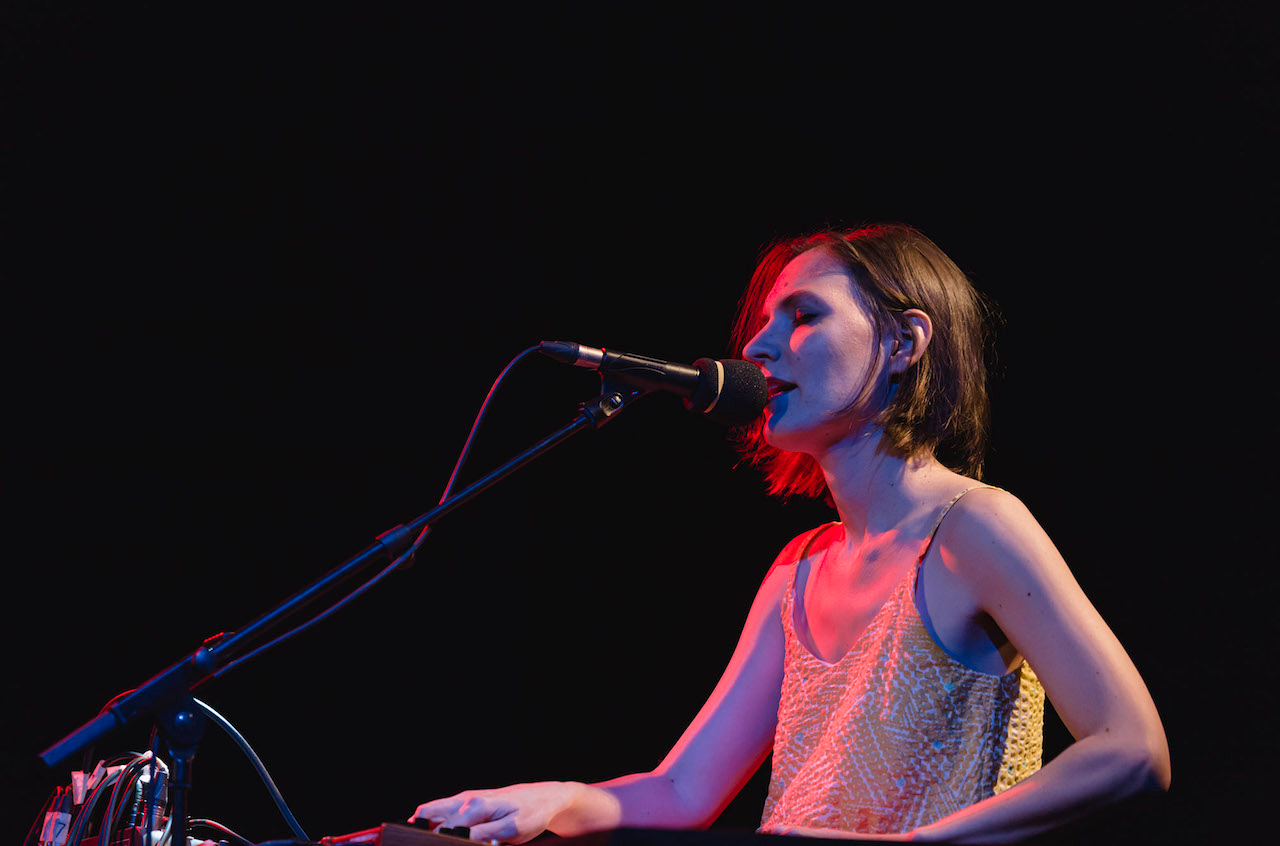 Caterina Barbieri The Italian composer wrote her thesis on the perception of time, space and sound, a fitting subject for someone who seemed to bend time to her will at MUTEK.ES. During the opening 25 minutes of her set, she constructed a pointillist trance riff that pattered like neon rain before slowing it down almost imperceptibly, until the melody dragged like a dinosaur trapped in tar. Perhaps it was just the setting—she performed in near darkness, the room lit by pins of light—but the effect was beautifully disorientating, as if time itself had slowed down. Having made her point, she gently took the riff back up to full speed, adding subtle melodic flourishes and playing with the sonic texture, sending the crowd into raptures. She was no one-trick pony—later, she played a track that mixed the rumble of thunder with the noise of a cinematic fist fight—but her first song was so perfectly dramatic that everything else felt almost unnecessary.
Caterina Barbieri The Italian composer wrote her thesis on the perception of time, space and sound, a fitting subject for someone who seemed to bend time to her will at MUTEK.ES. During the opening 25 minutes of her set, she constructed a pointillist trance riff that pattered like neon rain before slowing it down almost imperceptibly, until the melody dragged like a dinosaur trapped in tar. Perhaps it was just the setting—she performed in near darkness, the room lit by pins of light—but the effect was beautifully disorientating, as if time itself had slowed down. Having made her point, she gently took the riff back up to full speed, adding subtle melodic flourishes and playing with the sonic texture, sending the crowd into raptures. She was no one-trick pony—later, she played a track that mixed the rumble of thunder with the noise of a cinematic fist fight—but her first song was so perfectly dramatic that everything else felt almost unnecessary.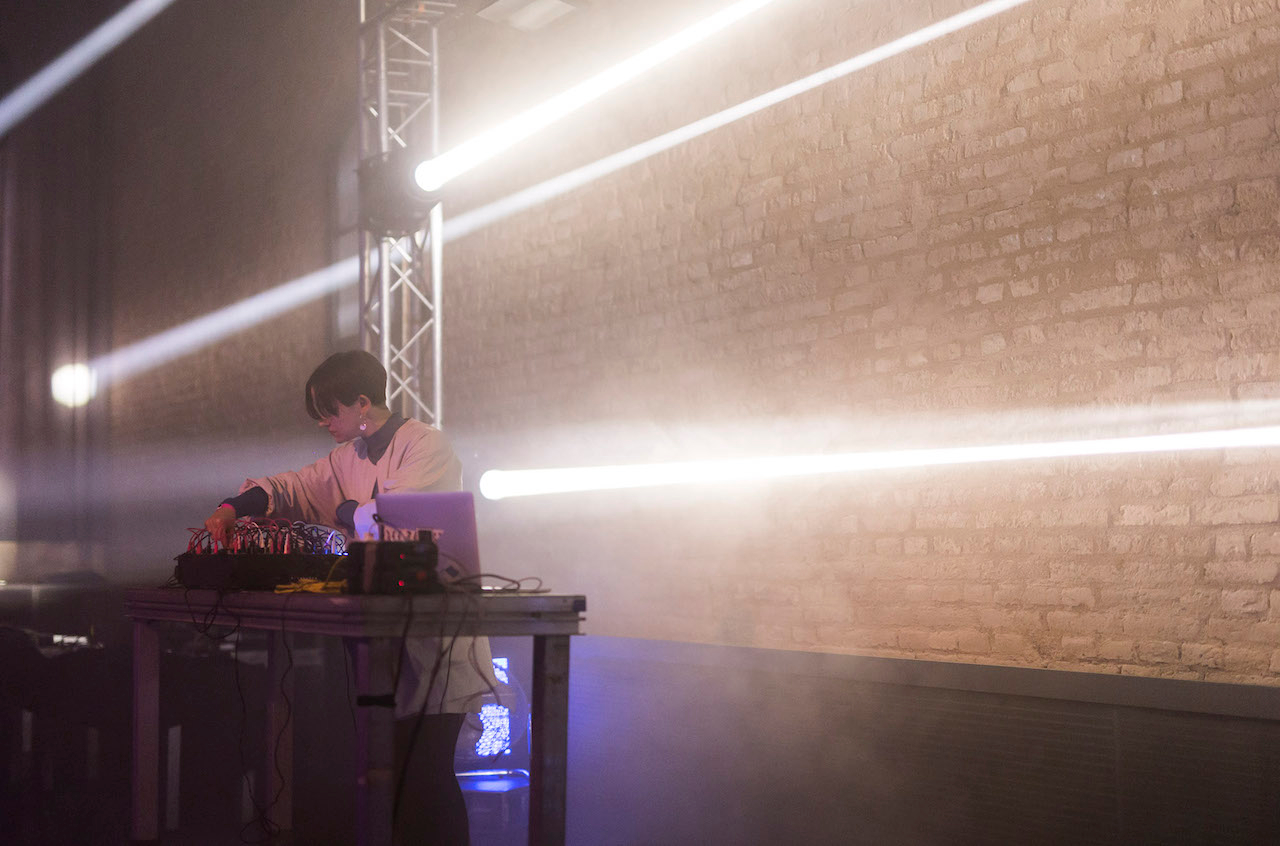 Ziúr The Berlin-based producer's live set was full of musical extremes and sonic contrasts, a giddy rush of samples, effects and drums that seemed to mutate as soon as you latched on. One song blended the vocal from TLC's "No Scrubs" with a deafening industrial beat; another resembled Ice Cube's "It Was A Good Day," had it been recorded in a dungeon. At other points, you could hear the influence of gabber, new age, thrash, metal, pop and jerky funk in a mixture that pulsed with energy. The crowd, who had been sedated all afternoon, dutifully lost it, with outbreaks of pogo-ing and hands raised in devil horns.
Ziúr The Berlin-based producer's live set was full of musical extremes and sonic contrasts, a giddy rush of samples, effects and drums that seemed to mutate as soon as you latched on. One song blended the vocal from TLC's "No Scrubs" with a deafening industrial beat; another resembled Ice Cube's "It Was A Good Day," had it been recorded in a dungeon. At other points, you could hear the influence of gabber, new age, thrash, metal, pop and jerky funk in a mixture that pulsed with energy. The crowd, who had been sedated all afternoon, dutifully lost it, with outbreaks of pogo-ing and hands raised in devil horns.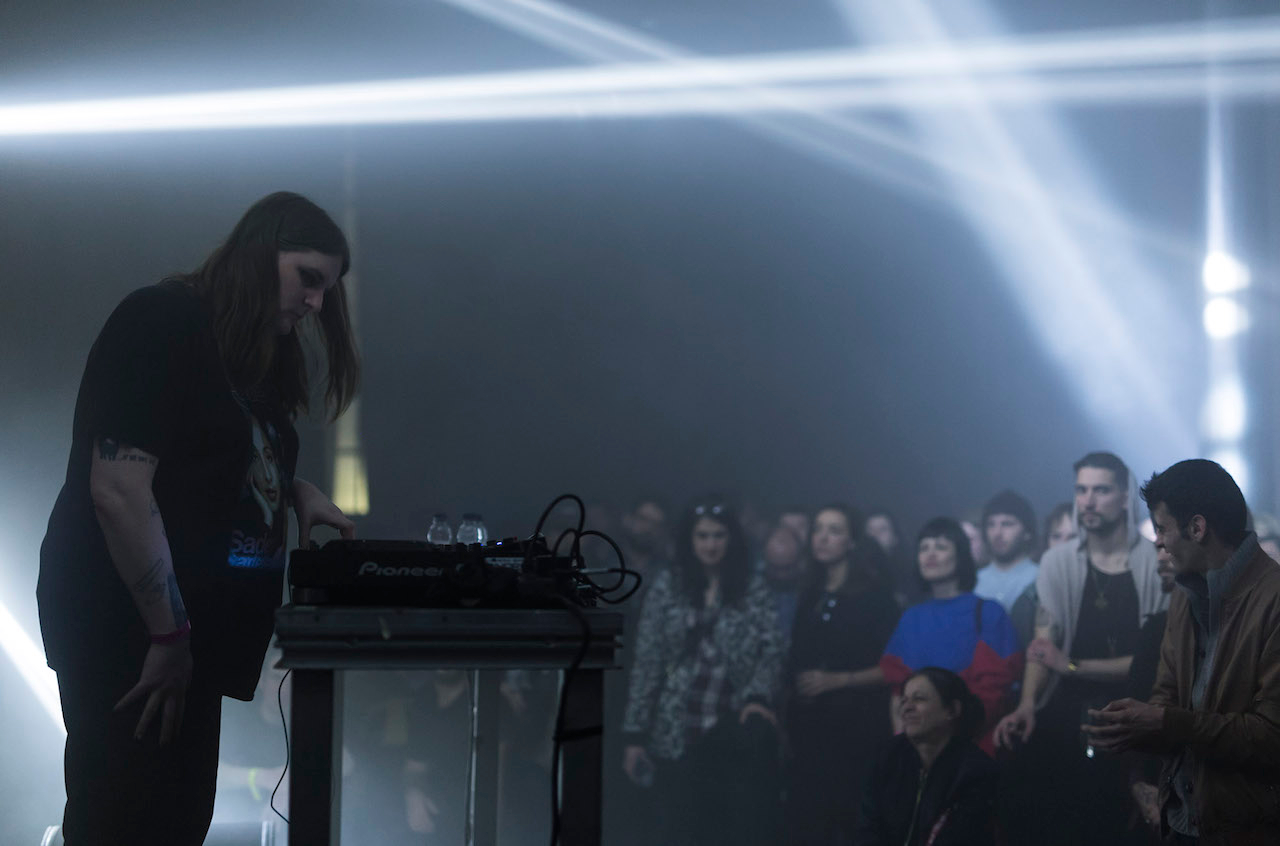 Graham Dunning Dunning's "Mechanical Techno" show was maybe the most charming live set at MUTEK.ES. He played several records at once on a specially elongated turntable axle, with each record making noise in a different way, be it via locked groove, the record physically knocking a shaker or table tennis balls dropping onto the surface of the vinyl. Academic as that may sound, the spectacle produced 45 minutes of wonky techno that lit up Mazda Space on Friday evening. It was fascinating watching Dunning work, his head bobbing with the frantic enthusiasm of a true believer. The sounds were joyful, a kind of spit-and-sawdust techno that threatened to barrel into chaos at any point.
Graham Dunning Dunning's "Mechanical Techno" show was maybe the most charming live set at MUTEK.ES. He played several records at once on a specially elongated turntable axle, with each record making noise in a different way, be it via locked groove, the record physically knocking a shaker or table tennis balls dropping onto the surface of the vinyl. Academic as that may sound, the spectacle produced 45 minutes of wonky techno that lit up Mazda Space on Friday evening. It was fascinating watching Dunning work, his head bobbing with the frantic enthusiasm of a true believer. The sounds were joyful, a kind of spit-and-sawdust techno that threatened to barrel into chaos at any point.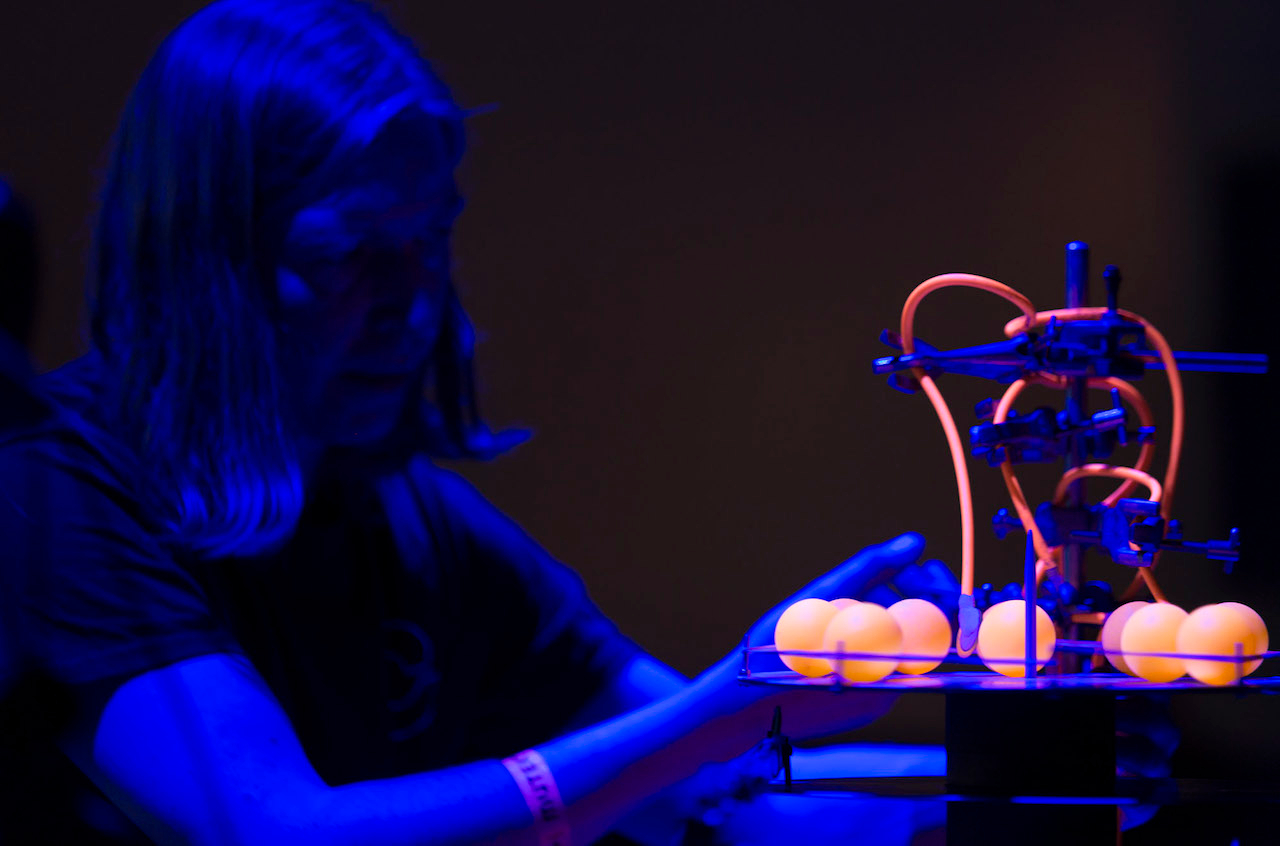 Alexandre Burton & Julien Roy If it weren't for events like MUTEK.ES, Alexandre Burton and Julien Roy might have difficulty finding a platform for their collaborative show, "Three Pieces With Titles," a head-spinning exploration of the interface between image and sound. Burton is an electroacoustic artist, coder and programmer; Roy is a sound artist. The show is based around what Burton calls an "audiovisual sampler," a bespoke piece of kit that allows the duo to sample whatever images are picked up by a central camera. In the first of the three pieces, the image controlled the sound. In the second, the sound controlled the image. And in the third, "the sound is the image is the sound"—colour turned into sound, acoustic vibrations changed the colour, and vice-versa. The effect was both familiar and unsettling, like a vast game of Ableton dominoes, with the crowd left to guess what exactly the two men onstage were doing, their hands occasionally drifting into view. From this intricate setup, Burton and Roy created music that built to brilliant peaks, like the disjointed violin riff in the first piece, the chest-rattling Autechre-style bass in the second and the apocalyptic rumble they drew from a ukulele in the third. Photo credit / Jordi Granduxe - Lead Alba Ruperez - All others
Alexandre Burton & Julien Roy If it weren't for events like MUTEK.ES, Alexandre Burton and Julien Roy might have difficulty finding a platform for their collaborative show, "Three Pieces With Titles," a head-spinning exploration of the interface between image and sound. Burton is an electroacoustic artist, coder and programmer; Roy is a sound artist. The show is based around what Burton calls an "audiovisual sampler," a bespoke piece of kit that allows the duo to sample whatever images are picked up by a central camera. In the first of the three pieces, the image controlled the sound. In the second, the sound controlled the image. And in the third, "the sound is the image is the sound"—colour turned into sound, acoustic vibrations changed the colour, and vice-versa. The effect was both familiar and unsettling, like a vast game of Ableton dominoes, with the crowd left to guess what exactly the two men onstage were doing, their hands occasionally drifting into view. From this intricate setup, Burton and Roy created music that built to brilliant peaks, like the disjointed violin riff in the first piece, the chest-rattling Autechre-style bass in the second and the apocalyptic rumble they drew from a ukulele in the third. Photo credit / Jordi Granduxe - Lead Alba Ruperez - All others